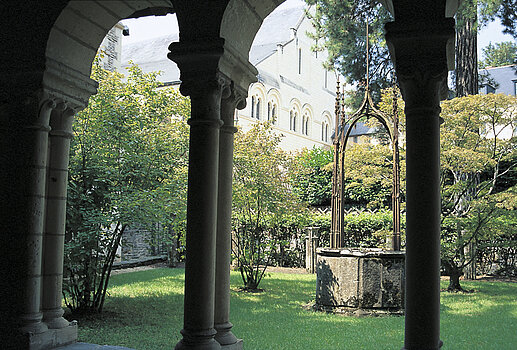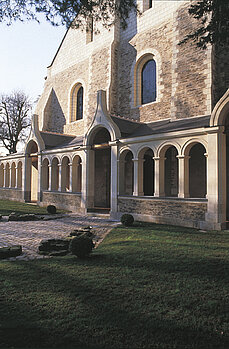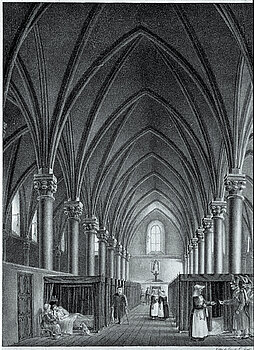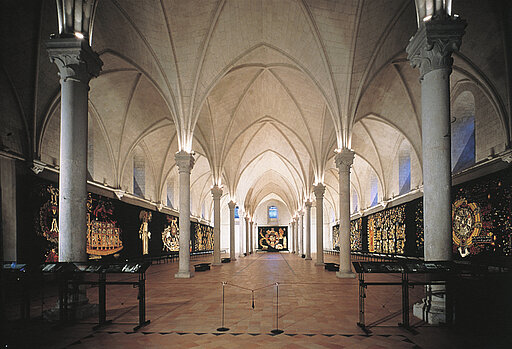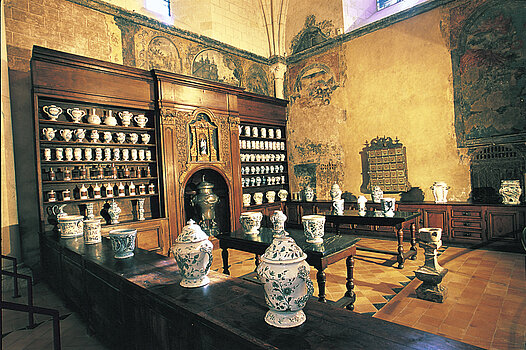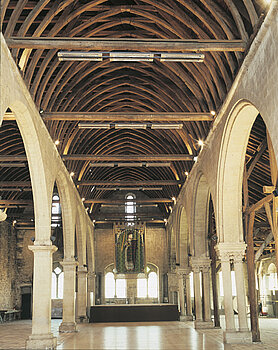The Jean-Lurçat museum and contemporary wall-hangings
St. John’s hospital in Angers is one of the oldest illustrations of French hospital architecture. The Great Hall for the Sick, a major edifice of gothic art in the west of France together with the chapel, the cloister and the grain loft form a remarkable example of mediaeval civil works.
A foundation covered by royal patronage
The hospital equipment of the time was reduced to the strict minimum : two chaplaincies, two leper houses and a few monastic infirmaries which also cared for the lay. Around 1180, guided by Henry II Plantagenet (King of England) who had already set up similar institutions in Le Mans and several towns in Normandy, the Seneschal of Anjou, Etienne de Marçay, founded a large hospital dedicated to Saint John the Evangelist in the district of the Doutre which was growing rapidly. The closeness of the river Maine and one of its reaches, which flowed at the foot of the hospital, surely had something
to do with the choice of location, as it could be supplied by boat and the river could be used to transport the sewage away from the hospital.
The foundation was built for the poor and sick. In compliance with the legislation of the third Council of Latran, the hospital benefited from a chapel in 1184, served by 4 priests and later, around 1190 from a cemetery. Between 1203 and 1205, thirty monks, nuns and lay brothers, under the responsibility of a prior, observed the teachings of Saint Augustine, laying down its statutes, which were later confirmed by Pope Clement IV in 1267.
Thanks to generous donations from Henry II and a group of laymen and priests, the future of the foundation was secured. This was completed by the Treilles lock, some of the taxes from the Grand Pont Bridge, the free transport of salt, land, woods and town rents. Not all the sick were cared for. Those who had incurable diseases, the contagious, dangerous individuals and young children, were all left aside. The brothers had to speak to “Our Lords the poor” calmly, feed them well, care for them at night, make sure they weren’t cold and give them a decent burial. However, this notion of
service was less present at the end of the Middle Ages.


